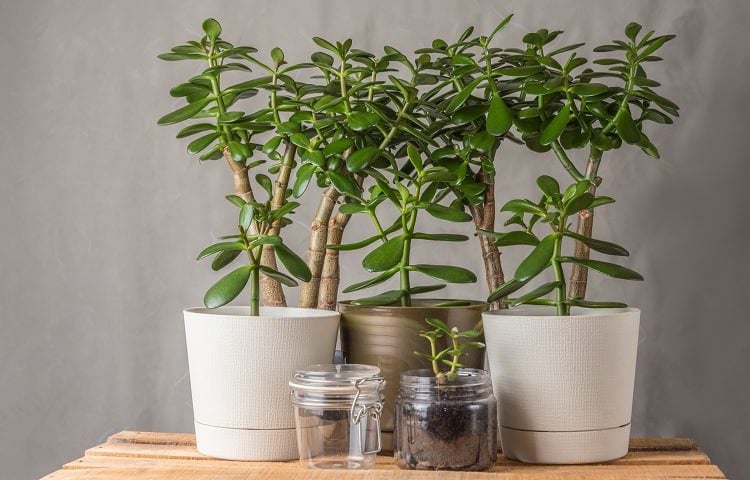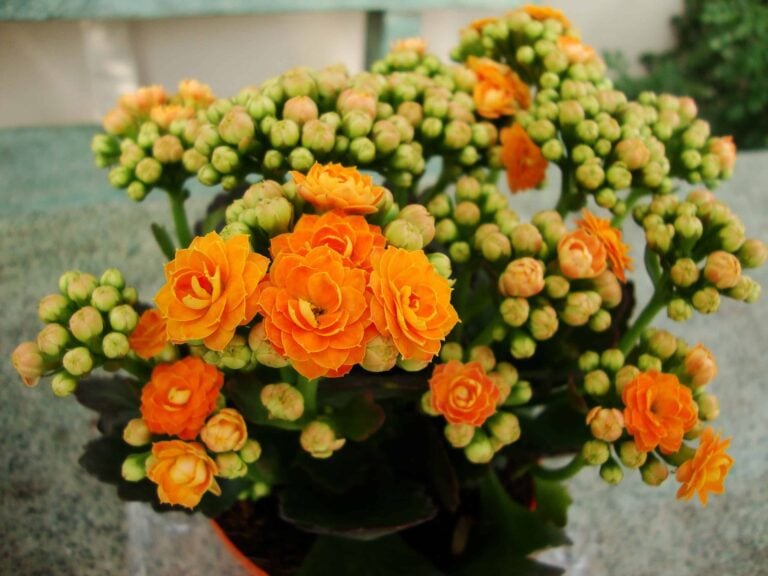Understanding the Zamioculcas Zamiifolia (Zanzibar Gem)
A popular choice of indoor plant, Zamioculcas zamiifolia or Zanzibar Gem has gained a name for itself as an easygoing and robust houseplant. It grows thick and beautiful foliage with minimal care, making this an ideal species for even inexperienced gardeners. You can spruce up any room with this plant’s elegant, almost exotic appearance.

Zanzibar Gem is a slow-growing plant that requires minimalistic maintenance and little sunlight to thrive and strive inside your homes. Considered a type of perennial, it makes a perfect indoor plant for anyone interested in balcony gardening or indoor gardening. This article will provide a comprehensive guide on how to grow and care for Zanzibar Gem, including sunlight requirements, care tips, and growing tips.
Table of Contents
What is Zanzibar Gem?
The Zanzibar Gem, also known as ZZ Plant or Zamioculcas zamiifolia, is a low-maintenance houseplant that has become increasingly popular in recent years. It is commonly known as Zanzibar Gem because of its origin in Zanzibar, an archipelago off the coast of Tanzania in Eastern Africa. The plant was first discovered in the late 19th century by German botanist Gustav Adolph Wiener, who found it growing in a forest in Tanzania.
The plant is a member of the Araceae family, which includes other popular houseplants such as the peace lily and the philodendron. It is highly valued for its attractive foliage and ease of care, making it a great choice for beginners and experienced gardeners alike.

Common Names
The Zanzibar Gem plant is known by several other names, including:
- ZZ plant: This name comes from the plant’s scientific name, Zamioculcas zamiifolia.
- Zuzu plant: This is a nickname for the ZZ plant, which is often used by plant enthusiasts.
- Emerald palm: This name is used to describe the ZZ plant’s glossy, dark green leaves, which give it a palm-like appearance.
- Aroid palm: This name is derived from the ZZ plant’s family, Araceae, which is also known as the aroid family.
- Eternity plant: This name is used to describe the ZZ plant’s long-lasting leaves, which can survive for several months without water.
Origins and History
Zamioculcas zamiifolia, or the ZZ plant for short, has long been a popular decorative accent in office buildings, malls, and other public spaces around the globe. Native to East Africa, it’s known by a number of common names, including the Zanzibar Gem, the Aroid Palm, the Money Tree, the Eternity Plant, and the Chinese New Year Festive Plant. The species’ booming popularity as a houseplant is primarily due to its hardy yet undemanding nature. The Zanzibar gem has been gaining popularity in recent years amongst homeowners who are seeking a plant that will look good in their living room with minimal effort.
You can recognize Zamioculcas zamiifolia by its thick, graceful stems lined with fleshy green leaves. Stems grow from rhizomes and can reach up to three feet in length when living indoors, but it takes a few years for the foliage to grow to its mature size. At maturity, the plant is able to produce small flowers, but this rarely happens with indoor ZZ plants. When plants do blossom, flowers are small and grow close to the base of the stems. Zamioculcas zamiifolia is grown more for its glossy leaves than its underwhelming flowers. In fact, this plant’s picture-perfect foliage sometimes causes people to mistake it for fake.
The ZZ plant is poisonous if ingested, and it should be kept out of reach of pets and young children. When you handle your plant, it’s a good idea to wear gloves and wash your hands afterward as a precaution.
Why Grow a Zanzibar Gem?
As a native to the rocky and arid terrain of Eastern Africa, the ZZ plant is used to growing in extreme conditions. It tolerates low light, bright light, and different levels of water. Zamioculcas zamiifolia can even handle drought conditions.
This plant is well adapted to life indoors, equipped with everything that it needs to survive as a potted houseplant. The breed is virtually indestructible, able to handle neglect and abuse in a forgiving manner. In fact, Zamioculcas zamiifolia is actually known to thrive when left alone.
Caring for Your Zanibar Gem
The Zanzibar Gem or ZZ plant is ideal for novice gardeners and busy homeowners, as it requires very limited care and attention to stay healthy. As long as you give your plant proper conditions for growth, it will reward you with thick, luscious foliage year-round.
Potting and Propagation
Zanzibar Gem grows slowly and doesn’t need frequent repotting. At most, it will need to be transferred into a larger pot once per year in the spring, right before growing season. You will need to repot more often during the first few years of the plant’s life as it reaches its mature size. The pots that you transfer your plant into should have plenty of holes in the bottom to promote drainage and reduce the risk of overwatering.
You can easily propagate your ZZ plant by dividing rhizomes or by using leaf cuttings. If you decide to use cuttings, simply plant each leaf in potted soil and cover with plastic, then wait for roots to develop. New root formation can take several months to a year to develop. If interested, you can learn more about propagating your ZZ plant from gardener Khang Starr.
Soil and Fertilizer
When potting, you should use a medium that drains well to prevent the buildup of water in your plant’s soil and around its root system. The best potting mixtures for the Zanzibar Gem are similar to the rough soils found in its natural habitat. You should include a healthy amount of perlite or sand in your plant’s potting mixture.
During the growing season in April through August, you can apply a balanced, diluted liquid fertilizer to your Zanzibar Gem once per month to give your plant access to the nutrients that it needs. You should always apply fertilizer to moist soil to avoid burning the plant’s roots, and try not to get any directly on any leaves.
Watering and Humidity
The ZZ plant is able to survive through rain and drought, but it grows best when kept in moderately damp soil. You should water your plant when the soil starts feeling dry to the touch. This helps to ensure that you don’t accidentally overwater your ZZ plant. The amount of water you give your plant will vary slightly based on where you choose to store it, with plants in sunny areas requiring more water and plants in darker rooms requiring less water. Zamioculcas zamiifolia also prefers a somewhat humid environment for optimal growth.
Lighting and Temperature
Zamioculcas zamiifolia grows best at moderate temperatures of around 60 to 75°F, and shouldn’t be kept at anything lower than 45°F. While the plant grows faster in bright light, the ZZ plant is also able to thrive in low or indirect sunlight. It’s the ideal plant for areas of the home that don’t get a great deal of natural light from windows.
Zanibar Gem Common Mistakes and Missteps
While Zamioculcas zamiifolia is a forgiving species, it can still suffer from improper care. Overwatering is the most common mistake that homeowners and gardeners make when it comes to this plant. Overwatering can lead to stem and rhizome rot, fungal infections, disease, and more health problems. It’s better to underwater your plant than to overwater it.
Leaves turning yellow or brown can indicate that you are giving your plant too much water. The right irrigation schedule and a potting mixture that drains well can help you to easily eliminate issues related to soggy soil and standing water. The experts at PlantzNThings can tell you more about how to provide your Zamioculcas zamiifolia with a healthy amount of water.
A moderately humid environment is best when it comes to the ZZ plant. While this species doesn’t need the same moisture levels as other tropical plants, Zamioculcas zamiifolia can still suffer when kept in an arid environment. If you live in a dry region, your plant may need artificial humidity from misting, a tray with wet pebbles, or a humidifier. You may also need to provide humidity during winter months, when weather and indoor heating dry out the air in your home more than usual. If you see the tips of your plant’s leaves starting to turn brown, this may indicate that its surrounding environment is too dry.
Pests and Diseases
Zanzibar Gem is generally a hardy plant that is resistant to pests and diseases. However, like any plant, it can still be susceptible to certain issues.
One of the most common pests that can affect Zanzibar Gem is spider mites. These tiny insects can cause yellowing and wilting of leaves. To prevent spider mites, keep the plant well-hydrated and mist the leaves regularly. If you notice an infestation, treat the plant with a mild insecticide soap.
Another pest that can affect Zanzibar Gem is mealybugs. These insects can cause white, cottony masses to appear on the plant’s leaves and stems. To prevent mealybugs, keep the plant clean and well-ventilated. If you notice an infestation, treat the plant with a mild insecticide soap.
Zanzibar Gem can also be susceptible to root rot if overwatered or planted in poorly-draining soil. To prevent root rot, allow the soil to dry out partially between waterings and ensure that the pot has adequate drainage.
Frequently Asked Questions
- How do I care for my Zanzibar Gem? Zanzibar Gems are low-maintenance plants that require little attention. They prefer bright, indirect light and should be watered only when the soil is dry to the touch. Overwatering can cause the roots to rot, so it’s important to let the soil dry out between waterings.
- Can I propagate my Zanzibar Gem? Yes, Zanzibar Gems can be propagated by dividing the plant at the roots and replanting the sections in fresh soil. You can also propagate the plant by taking stem cuttings and rooting them in water or soil.
- How tall can a Zanzibar Gem grow? Zanzibar Gems can grow up to 3 feet in height in ideal conditions. However, they can also be pruned to maintain a smaller size.
- Can I keep my Zanzibar Gem outside? Zanzibar Gems are tropical plants and are not frost-tolerant. They should be kept indoors or in a warm, sheltered location outdoors.
- How often should I fertilize my Zanzibar Gem? Zanzibar Gems do not require frequent fertilization. You can fertilize the plant once a month during the growing season (spring and summer) with a balanced fertilizer.




